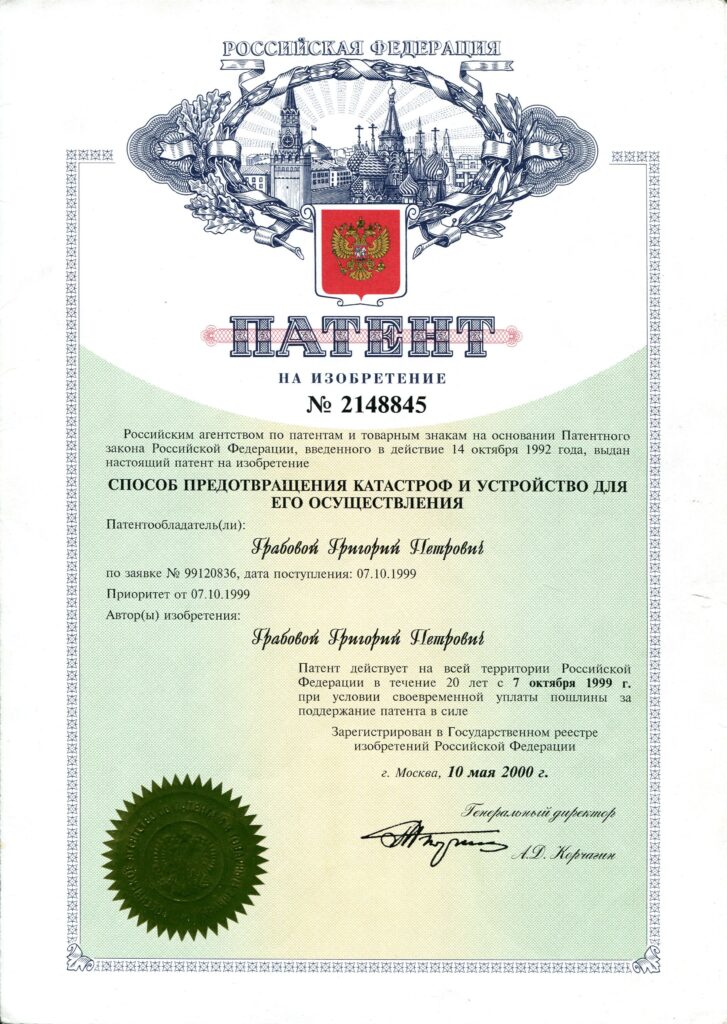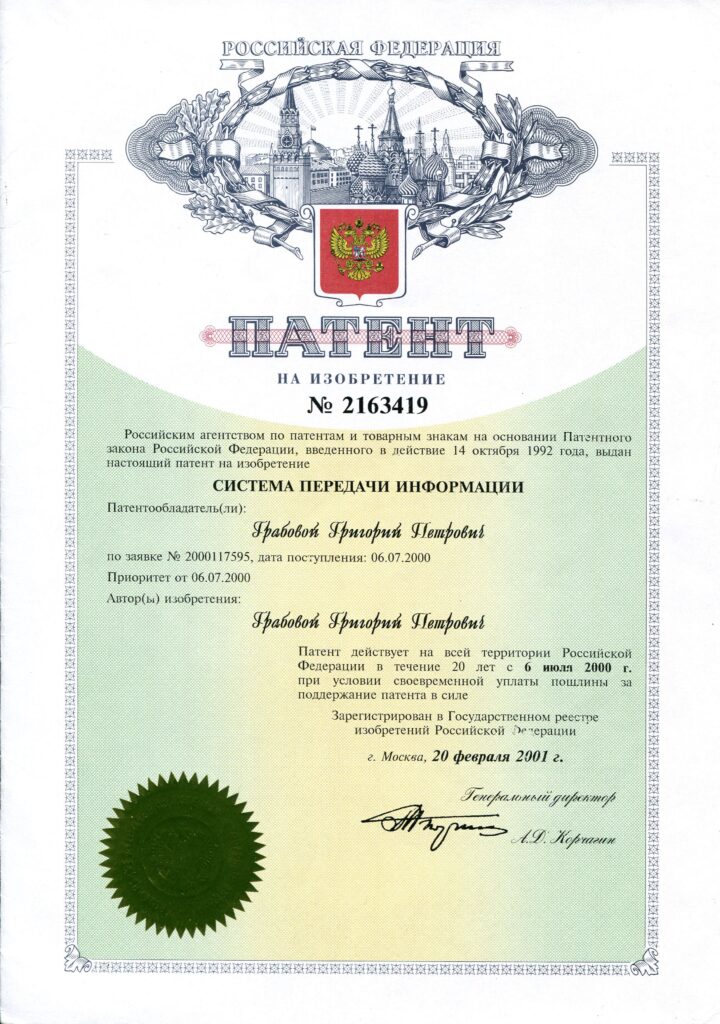Scientific validation of
PRK-1U
The technology PRK-1U represents a major step forward, combining the principles of :
- Physics
- Quantum physics
- Mathematics
- Biotechnology
- Sciences of consciousness
Its main aim is to develop concentration and awareness in order to amplify human capacities.
By capturing and amplifying thought bio-signals, this unique device enables greater control of reality and accelerated development of mental concentration, opening up new perspectives for personal development and mastery of consciousness.
By incorporating these validated and published scientific findings, the PRK-1U se positionne comme une technologie de pointe, permettant d’exploiter le potentiel insoupçonné de l’esprit humain pour influencer et harmoniser notre vie quotidienne, et pour atteindre des objectifs ambitieux tels que :
- Reality check
- Eternal life
(The notions of "eternal life" and "reality control" are to be understood in the sense of Grigori Grabovoi's teachings - and not in the sense of the definitions known to the general public).
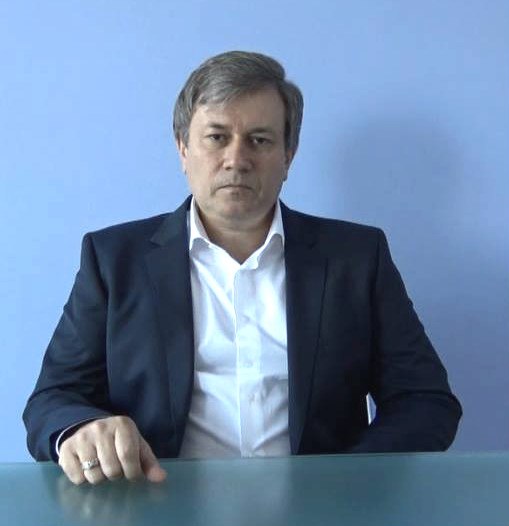
Le PRK-1U vise à favoriser l’expansion éternelle de l’univers, condition essentielle pour garantir la vie éternelle.
En se concentrant sur les lentilles optiques du PRK-1U, l’utilisateur peut diriger ses pensées et les amplifier pour influencer les événements futurs et contribuer à la stabilisation de l’univers et à l’amélioration de sa vie quotidienne.
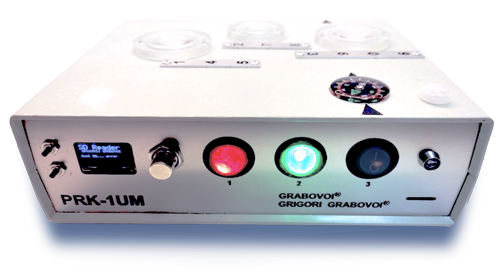
Scientific basis of PRK-1U technology
Considering the discoveries made by numerous scientists on human thought and consciousness - which you can find here - it is accepted that :
- Human thought emits electromagnetic waves (or radiation) known as "bio-signals".
- In addition to its energy potential, thought also has mass, giving it a quantifiable materiality.
– Les biosignaux sont capables d’interagir directement avec les objets et les sujets du monde matériel – prouvant que la pensée peut influencer les événements physiques et matériels de notre réalité.
- These biosignals can also interact with technological devices such as the PRK-1U (and other existing devices).
These results may seem incredible to most orthodox or conformist Western scientists...
But PRK-1U technology is based on extremely solid, cutting-edge scientific principles that conventional science is still struggling to explain.
In application of these principles...
The PRK-1U is designed to capture and amplify the biosignals of human thought,
to produce a tangible effect on events.
It allows us to influence reality through our thoughts.
Quantum physics and PRK-1U
The PRK-1U establishes a close link with quantum physics through its operation and underlying principles.
L’appareil est basé sur le fait que la conscience humaine peut interagir avec la réalité physique by complex quantum processes.
Dans cette perspective, le PRK-1U capte et amplifie les biosignaux émis par la pensée, ce qui est en résonance avec des concepts de la physique quantique, tels que l’effet observateur et la non-localité.
These notions show that consciousness can influence the behaviour of subatomic particles.
Le PRK-1U s’appuie également sur le principe des champs de torsion et des particules « microleptons » capables de transmettre de l’information à travers ces champs. Il amplifie les interactions subtiles entre la pensée humaine et les champs de torsion, offrant ainsi la possibilité de moduler la réalité de manière quantique.
Le PRK-1U exploite des phénomènes comme la superposition d’états et l’intrication quantique qui permettent à la conscience de jouer un rôle actif dans la transformation de la matière et des événements.
L’appareil est donc un outil permettant à son utilisateur de « piloter la réalité » par une meilleure maîtrise de sa concentration, s’appuyant sur le fait que la pensée humaine (par des mécanismes encore méconnus et peu exploités par la science orthodoxe) influence des dynamiques quantiques.
These mechanisms reconcile advanced theories on consciousness and the mysteries of quantum physics with cutting-edge technology.
Lhe PRK-1U is notwithstanding a quantique à proprement parler...
But the way it works exploits the discoveries of waves and thought (detailed on this page)themselves explained by quantum physics.
Patents behind PRK-1U technology
PRK-1U technology is based on 2 patents by Grigori Grabovoï:
- "Disaster prevention method and system for implementing it (Patent no. 2148845).
- "Information transmission system (Patent no. 2163419).
The legitimacy and novelty of these patents have been established by the court and therefore have preventive value.

On 30 May 2008, Elena Dagunts, a graduate of the Russian State Academy of Intellectual Property and a patent expert, concluded that these patents were pioneering.
C’est-à-dire qu’ils n’ont pas d’analogues et de prototypes dans l’histoire des inventions, et qu’en outre, les revendications de ces brevets présentent une nouveauté absolue.
Cette conclusion a été corroborée par le conseil en brevets Kopaev A., qui l’a vérifiée à la suite d’un contrôle de pureté des brevets.
Il a indiqué que non seulement les brevets, mais aussi les principes et les approches, les méthodes et les systèmes utilisés dans les brevets par Grigori Grabovoï, n’ont jamais été enregistrés dans aucun pays dans l’ensemble de l’histoire des inventions.
Specifically, these are :
- The use of biosignal generation in the optical system.
- Modifying the intensity of the radiation of thoughts to normalise events.
What's more, prior to Grigori Grabovoi's inventions, no scientific publication or popularisation in any country contained such information.
Cette validation scientifique et ces brevets uniques légitiment pleinement l’invention du PRK-1U et attestent de son originalité et de son efficacité.
Patent no. 2148845
"Method of disaster prevention and
to implement it".
Ce brevet décrit une méthode et un dispositif pour prévenir les catastrophes naturelles et causées par l’homme en utilisant des signaux lumineux et un système optique sophistiqué.
Its innovation lies in :
- The use of light and crystals to detect and prevent disasters.
- The integration of an advanced optical system with precise processing of light signals.
Key benefits:
- More efficient and versatile than existing methods.
- Can be used for various types of disaster, not just earthquakes.
- Lower operating costs thanks to simpler, reusable technology.
This method and device offer a new approach to disaster risk management, with improved accuracy and wide application.
Objective
Empêcher des catastrophes comme les tremblements de terre ou les accidents industriels avant qu’ils ne se produisent.
How it works
The device picks up light signals from the area where a disaster could occur.
These signals are processed by an optical system made up of crystals, often rock crystal, arranged in cubes in a glass sphere.
The optical system generates standardised radiation to analyse the characteristics of the light signals.
Disaster Detection
A disaster is predicted when the normalised radiation in a specific zone increases relative to other zones.
For natural disasters, an increase from 20 to 28% indicates a high probability of disaster.
For human disasters, an increase of 10 to 12% is an indicator.
Treatment Technology
The light signals pass through a series of crystals and are processed to normalise the situation.
A sensor records these signals, which are then amplified and analysed by a system of processors.
The results are displayed and standardisation signals are sent to prevent disaster.
Patent no. 2163419
"Information transmission system
This patent describes a method and a device for improving the wireless transmission of information using innovative optical elements.
Its innovation lies in :
- The transmitter's detection elements receive thoughts from the operator and convert them into light radiation.
- The use of crystals to generate and normalise light radiation.
- The radiation is immediately reproduced by the receiver elements and then converted into electrical signals.
Key benefits:
- High reliability thanks to a simplified structure with no moving parts.
- Rapid transmission of information without delay, even over distances of thousands of kilometres.
- High immunity to interference, with transmission unaffected by obstacles.
Cette méthode et ce dispositif offrent une approche novatrice pour la transmission d’informations, utilisant des principes de physique optique et des cristaux pour une communication fiable et sans interférences sur de longues distances.
Objective
Améliorer la fiabilité et l’immunité aux interférences des systèmes de transmission d’informations sans fil sur de longues distances.
How it works
Le système de transmission comporte un émetteur et un récepteur espacés l’un de l’autre.
Each unit (transmitter and receiver) has spherical optical detection elements of varying diameters, fixed to a support element.
L’émetteur active les éléments de détection qui émettent un rayonnement lumineux.
This radiation is reproduced almost instantaneously by the receiver elements.
Detection technology
The detection elements are made of crystal, often in the shape of cubes, and are integrated into a glass sphere.
Le récepteur convertit le rayonnement reçu en signaux électriques, traités par un processeur pour enregistrer l’information.
Find out more about these two patents
in Russian, English and French on thistte page.
Validation of Grigori Grabovoï's work on PRK-1U technology
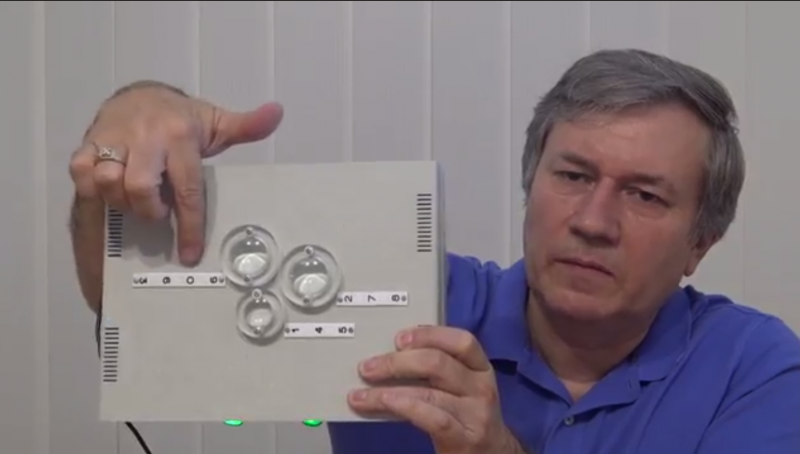
Grigori Grabovoi said he had created the PRK-1U thanks to his clairvoyant and predictive abilities.
En sa qualité de diplômé de la faculté de mathématiques appliquées et de mécanique de l’université d’État de Tachkent, il a appliqué les méthodes reconnues des mathématiques supérieures et de la physique orthodoxe dont il est spécialiste.
His physical and mathematical equations justifying the patents described above have been verified on several occasions and published in scientific journals.
Un article de Grigori Grabovoï, présentant ses justifications théoriques et expérimentales, a été publié dans la revue « Electronic Engineering » de l’Académie des sciences de Russie.
Read Grigori Grabovoï's article published in Russian by Electronic Engineering in 1999:
"Research and analysis of fundamental definitions of optical systems in disaster prevention and prediction-oriented microprocess control".
Composed of renowned scientists, the editorial board of Electronic Engineering has verified Grigori Grabovoï's physical and mathematical theory, his calculations and the experimental results confirming the calculations.
You can download the English version of the article here.
Composition of the editorial committee :
- Y.N. Dyakov (editor-in-chief) - AMI academician, doctor of technical sciences, professor.
- E.V. Avdeev - Candidate for technical sciences
- V.Y. Bartenev
- A.S. Bondarevsky
- V.D. Werner - Ph, Master of Science
- S.A. Garyainov (Deputy Editor-in-Chief) - Doctorate in Science
- V.L. Dshkhunyan - Candidate in technical sciences
- V.N. Dyagilev - Candidate for technical sciences
- A.V. Emelyanov - Doctor of Science
- L.A. Ivanyutin - Doctor of Science
- G.G. Kazennoe - Doctor of Science
- RAS G.Y. Krasnikov - Doctor of Science
- V.E. Minaychev - Ph.D.
- A.A. Popov - Ph.D.
- A.A. Rudenko - Ph.D.
- T.D. Shermergor - Ph.D.
- A.T. Yakovlev - Ph.D.
In addition to the theoretical and qualitative solutions obtained, the resolution of Grigori Grabovoï's equations has enabled precise measurements to be made of the thought biosignal captured by the PRK-1U.
En d’autres termes, au lieu d’avoir simplement une compréhension théorique ou une formule générale, Grigori Grabovoï a pu utiliser ses équations pour obtenir des résultats mesurables et vérifiables sur :
- The specific wavelengths of the biosignal,
- Biosignal intensities,
- And other measurable quantities relevant to the experiments and practical applications of PRK-1U.
Ces solutions quantitatives ont permis à Grigori Grabovoï de valider ses travaux et de confirmer l’exploitabilité de ses inventions par les résultats d’expériences obtenus en comparant les résultats théoriques aux données expérimentales.
The Big Bang theory at the heart of how PRK-1U works
During operation of the third mode of the PRK-1U device and the modified PRK-1UM device, each lamp ignition is produced by a physical process in the converter similar to a powerful shock action.
Les calculs physiques et mathématiques correspondants concrétisent la théorie de Grigori Grabovoï sur la synthèse ondulatoire de la réalité dans la zone initiale d’intersection des ondes statiques et dynamiques de la réalité.
Selon les équations physico-mathématiques de cette théorie, dans la zone initiale d’intersection des ondes statiques et dynamiques de la réalité, il existe des processus physiques similaires à la théorie bien connue du Big Bang.
D’après ces équations, la théorie du Big Bang est un cas particulier de la théorie de la synthèse des ondes.
The PRK-1U therefore works in part on principles linked to the Big Bang theory.
The Big Bang theory applied to PRK-1U
Selon cette théorie, l’univers a commencé par une explosion massive, créant tout ce qui existe aujourd’hui. Cette théorie est généralement acceptée et bien documentée.
Grigori Grabovoï used concepts from this theory to develop the PRK-1U.
The device works using physical and mathematical equations similar to those describing the Big Bang.
Par exemple, lorsqu’il est en mode trois, le PRK-1U génère une action physique semblable à une puissante explosion, créant un effet similaire à l’onde de choc du Big Bang.
This makes it possible to synthesise static and dynamic waves, a crucial process in the operation of the PRK-1U.
Grigori Grabovoï a étudié et élaboré ces équations lors de ses travaux à l’Institut de sismologie et à l’Institut de cybernétique en Ouzbékistan.
Ces recherches lui ont permis de comprendre comment les processus de l’univers peuvent être appliqués à des dispositifs pour influencer la réalité.
In simple terms, the PRK-1U uses these concepts to capture and amplify human thoughts, making it possible to modify real events using mental concentration.
La théorie du Big Bang suggère que l’univers continue de s’étendre.
Grigori Grabovoï applique cette idée en utilisant le PRK-1U pour favoriser cette expansion, créant une « réalité éternelle ».
En réduisant la densité moyenne de la matière dans l’univers par le biais de rayonnements et de champs électromagnétiques contrôlés, le PRK-1U aide à maintenir cette expansion, essentielle pour la vie éternelle de tous.
As a result, the PRK-1U not only theorises about the Big Bang, but also actively applies its principles to improve and extend life illustrating an innovative and practical use of cosmological theories.
Wave synthesis theory
Dans le PRK-1U, l’action de choc, c’est-à-dire de type explosif, réalise le principe physique de l’évolution d’un tel système dans le temps, y compris, conformément à la théorie et aux équations de la synthèse des ondes, l’étape initiale, c’est-à-dire « le début du monde ».
Lorsqu’il travaillait à l’Institut de sismologie et à l’Institut de cybernétique de l’Académie des sciences de la République d’Ouzbékistan, Grigori Grabovoï a compilé et élaboré en pratique les équations physico-mathématiques permettant de calculer les caractéristiques de l’explosion en mesurant les paramètres de l’onde de souffle.
Ces équations permettent de calculer les processus d’évolution de l’Univers au stade initial – environ un centième de seconde depuis le « début du monde » – compilées et élaborées en pratique par Grigori Grabovoï alors qu’il travaillait au bureau d’études de Tachkent pour la construction de machines du ministère de la construction de machines générales en tant qu’ingénieur-mathématicien pour l’instrumentation spatiale.
Grigori Grabovoï used the powerful laser radiation facility available in his sector to conduct experiments confirming his equations and calculations on the subject of protection against continuous or pulsed laser radiation.
Les impulsions périodiques avec extrapolation des résultats 10^-2 secondes et 10^-17 ont permis de calculer la théorie de la synthèse des ondes, en utilisant les méthodes mathématiques de la théorie des fonctions d’une variable complexe et deux autres méthodes mathématiques depuis le stade initial du développement du monde – depuis le « début du monde » jusqu’à l’ordre d’un centième de seconde du développement du monde.
At the 1998 scientific session, during which Grigori Grabovoï defended his doctoral thesis « Structures appliquées du champ de création de l’information », le célèbre scientifique Albert Nikolaevich Nikitin a établi que la « Théorie de la synthèse des ondes » inclut comme cas particulier la « Théorie générale de la relativité » d’Einstein.
Applying Grigori Grabovoi's "Theory of Wave Synthesis", the PRK-1U operates in periodic pulse mode, where each light pulse generated simulates a shock action similar to that of the Big Bang.
Tests and testimonials
The PRK-1U has three optical lenses on its surface.
Lors de ses concentrations, l’utilisateur se concentre sur ces lentilles, ce qui permet de focaliser et d’amplifier les biosignaux de la pensée.
Concentration techniques using PRK-1U lenses have been validated by hundreds of user tests.
Find out more about the results of using PRK-1U as well as some written testimonials here.
